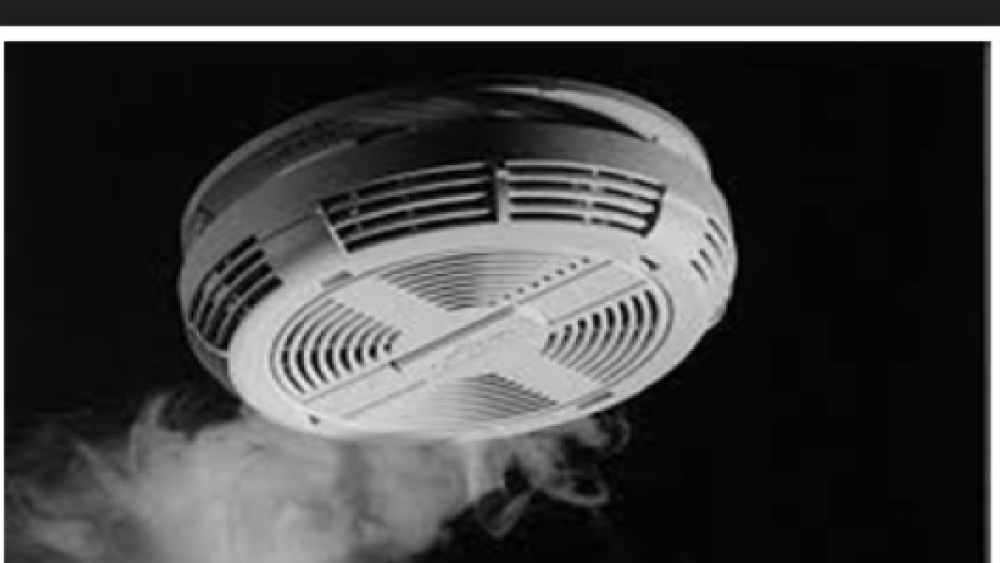By David Wichner
The Arizona Daily Star
GREEN VALLEY, Ariz. — The next time your home smoke alarms start chirping in the middle of the night, you can curse Green Valley resident Lyman Blackwell.
And when they go off for real and save your life, you can thank him.
Lyman, 91, was recently awarded the inaugural Philip J. DiNenno Prize by the National Fire Protection Association for his work in developing “the affordable home smoke alarm.”
The award, named for a pioneer in fire-safety engineering, honors “important innovations that have had a significant impact on public safety, including building, fire, and electrical safety.”
Lyman received the award, which came with a $50,000 cash prize, on June 22 at the association’s 2015 Conference and Expo in Chicago.
“The affordable home smoke alarm is one of the most important fire safety inventions of our time, helping save tens of thousands of lives in home fires,” Jim Pauley, National Fire Protection Association president, said in the award announcement.
A tinkerer since his teen years, Blackwell earned money in high school repairing radios, jukeboxes and pinball machines, then went to World War II as a flight engineer on B-17 bombers that helped pummel Germany into submission.
After getting a degree in electrical engineering at the University of Colorado, he taught himself nuclear physics -- and he recalls sneaking in to audit classes at Colorado.
With engineering jobs scarce, he started out repairing equipment and began consulting to improve electro-mechanical systems in the food processing, manufacturing and health care industries, including work with with electrocardiograms and radiation-detection devices, pacemakers and “iron lung” machines.
In the 1960s he operated his own company making Geiger counters based on his patented version of a device called the inverted triode, which allowed detection of very small electrical currents.
Blackwell said his first love was helping companies solve thorny technical issues they couldn’t handle themselves.
“I used to find people with problems, find a solution and sell them the device,” said Blackwell, who is inventor or co-inventor on 14 patents.
After developing technology for a lightning-detection system for a company working with NASA, Blackwell began working with Statitrol, a Denver company launched by entrepreneur Duane Pearsall to develop static-electricity control devices.
During a test in the mid-1960s of a device to measure a stream of ions -- atoms or molecules that carry a positive or negative charge -- Pearsall, Blackwell and their colleagues noticed that an ion meter reacted to the smoke created by a chain-smoking lab technician.
So-called ionization smoke detectors feature small amounts of low-level radioactive material that gradually give off alpha particles that charge the air in a chamber, allowing a small electric current to pass between electrodes. Smoke interferes with the ionization process, causing a current drop that can set off an alarm.
Pioneered in the 1930s, ionization smoke detectors came on the commercial market in the 1950s but were too big and expensive for home use.
But Pearsall saw the potential, and Statitrol initially marketed a hard-wired version of its smoke detector. As solid-state electronics replaced vacuum tubes in the 1960s, Blackwell designed a solid-state version of his inverted triode, reducing power needs to allow detectors to be run by small batteries. He later devised a circuit to monitor battery levels and sound an alert when they run down.
In 1975, Statitrol started mass-producing battery-operated smoke detectors that sold for about $38. Pearsall also began working with the National Fire Protection Association to push for uniform building codes to require smoke detectors in new construction.
The percentage of U.S. homes with smoke alarms increased from 22 percent in 1977 to 96 percent in 2010, according to the NFPA. Following the introduction of low-cost home smoke alarms, U.S. home fire deaths fell by 53 percent, from nearly 5,900 deaths in 1977 to 2,755 in 2013.
Blackwell credited Pearsall, who gained fame as an entrepreneur and died in 2010, with recognizing the potential of an affordable home smoke detector and driving the market. Statitrol sold the smoke detector technology to Emerson Electric in 1980.
“Pearsall was a marvelous CEO,” Blackwell said. “I did the technical work but the major part in building the company was done by him, and by 1978 he had 800 or 900 people building smoke detectors.”
Blackwell came to the Tucson area with his wife about 10 years ago partly to be closer to his son, local metal sculptor Lee Blackwell, in Tubac. His wife, a special-education teacher, died about six years ago.
While proud of his inventions, Blackwell doesn’t consider himself a life-saving hero for his smoke-detector work, putting it into perspective with his World War II duty: "(During the war) I killed a lot of people, and then I saved a lot of people, so how do you balance the scales?”
He said he plans to donate his cash prize to various charities, including local public television and groups pushing for solutions to global warming, which he views as a growing threat.
Blackwell still works on inventions in a shop behind his home in Green Valley, and he’s already working to do his part on global warming, by making renewable energy such as solar more practical.
One of his current projects: Developing a gravity-based system to store solar power -- using suspended weights much like weight-driven grandfather clocks.
“I’m still inventing,” he said. “I’m retired, but the trouble with being an inventor is, it’s a terminal illness,” he joked.
___
(c)2015 The Arizona Daily Star (Tucson, Ariz.)
Distributed by Tribune Content Agency, LLC.












